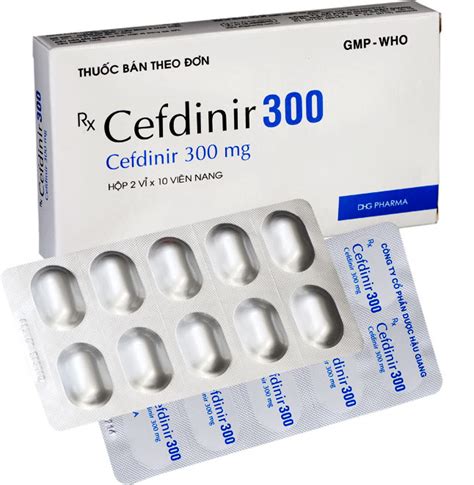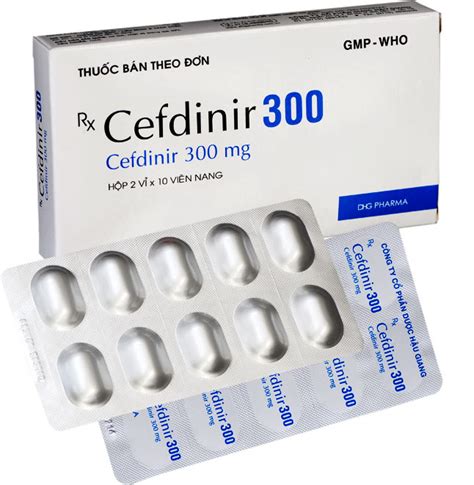Intro
Discover key facts about Cefdinir, an antibiotic medication, including its uses, side effects, and interactions, to understand its role in treating bacterial infections and promoting recovery with effective antibiotic treatment.
Cefdinir is an antibiotic that belongs to the class of cephalosporins, which are widely used to treat various bacterial infections. The importance of understanding cefdinir and its uses cannot be overstated, as it is a commonly prescribed medication for several conditions. In this article, we will delve into the world of cefdinir, exploring its benefits, mechanisms, and key information that patients and healthcare professionals should know. Whether you are a patient looking for information on your prescription or a healthcare provider seeking to deepen your understanding of this antibiotic, this article aims to provide a comprehensive overview of cefdinir.
The role of antibiotics like cefdinir in modern medicine is crucial, as they provide effective treatments for bacterial infections that could otherwise lead to severe complications or even death. However, the misuse and overuse of antibiotics have led to concerns about antibiotic resistance, making it essential to use these medications judiciously. Cefdinir, with its broad spectrum of activity, is an important tool in the fight against bacterial infections, but its use must be guided by a thorough understanding of its properties and potential side effects.
As we explore the topic of cefdinir, it becomes clear that this antibiotic is not just a simple medication but a complex chemical entity with a specific mechanism of action, dosage requirements, and potential interactions with other drugs. Patients who are prescribed cefdinir should be aware of how to take the medication correctly, what to expect in terms of side effects, and how to monitor their condition to ensure the infection is being effectively treated. Furthermore, understanding the differences between cefdinir and other antibiotics can help in making informed decisions about treatment options.
Introduction to Cefdinir

Benefits of Cefdinir
The benefits of cefdinir include its oral administration, which makes it convenient for patients, especially when compared to intravenous antibiotics that require hospitalization or frequent visits to a healthcare provider. Additionally, cefdinir has a relatively long half-life, which allows for once- or twice-daily dosing, improving patient compliance. Its broad spectrum of activity also means that it can be used to treat a variety of infections, from respiratory tract infections to skin and soft tissue infections.Working Mechanism of Cefdinir

Steps for Taking Cefdinir
When taking cefdinir, patients should follow these steps: - Take the medication orally with water. - The dose and frequency of cefdinir should be as directed by the healthcare provider. - It is essential to complete the full course of treatment, even if symptoms improve before finishing the medication. - Cefdinir can be taken with or without food, but taking it with food may help reduce gastrointestinal side effects. - Patients should inform their healthcare provider about any other medications they are taking, as cefdinir can interact with certain drugs.Side Effects of Cefdinir

Interactions with Other Medications
Cefdinir can interact with other medications, including: - Antacids and iron supplements, which can reduce the absorption of cefdinir. - Probenecid, which can increase the levels of cefdinir in the blood. - Warfarin, as cefdinir may increase the risk of bleeding.Precautions and Warnings

Statistical Data on Cefdinir Use
Statistical data show that cefdinir is widely used for treating community-acquired pneumonia, acute bacterial sinusitis, and acute exacerbations of chronic bronchitis. Its efficacy and safety profile make it a preferred choice for many healthcare providers. However, the increasing concern about antibiotic resistance highlights the need for judicious use of all antibiotics, including cefdinir.Practical Examples of Cefdinir Use

Comparison with Other Antibiotics
Cefdinir is often compared to other cephalosporins and antibiotics in terms of its spectrum of activity, pharmacokinetics, and side effect profile. For instance, cefdinir has a broader spectrum of activity than first-generation cephalosporins but may have a narrower spectrum compared to some fourth-generation cephalosporins. Understanding these differences is crucial for selecting the most appropriate antibiotic for a given infection.Future Perspectives on Cefdinir

Conclusion and Final Thoughts
In conclusion, cefdinir is a valuable antibiotic in the treatment of various bacterial infections. Its effectiveness, convenience, and relatively favorable side effect profile make it a popular choice among healthcare providers. However, it is essential to use cefdinir and all antibiotics judiciously, taking into account the potential for side effects, interactions with other medications, and the growing concern about antibiotic resistance. By understanding the benefits, working mechanisms, and precautions associated with cefdinir, patients and healthcare professionals can work together to ensure the responsible use of this medication.What is cefdinir used for?
+Cefdinir is used to treat various bacterial infections, including respiratory tract infections, skin and soft tissue infections, and certain infections of the sinuses and throat.
How does cefdinir work?
+Cefdinir works by inhibiting the synthesis of the bacterial cell wall, leading to the death of the bacterial cells.
What are the common side effects of cefdinir?
+Common side effects of cefdinir include diarrhea, nausea, vomiting, abdominal pain, headache, and rash.
We hope this comprehensive overview of cefdinir has provided you with valuable insights into the world of antibiotics and the importance of responsible medication use. If you have any further questions or would like to share your experiences with cefdinir, please do not hesitate to comment below. Your input can help others better understand this medication and its role in treating bacterial infections. Additionally, if you found this article informative, please consider sharing it with others who may benefit from this information. Together, we can promote a better understanding of antibiotics and their appropriate use.
